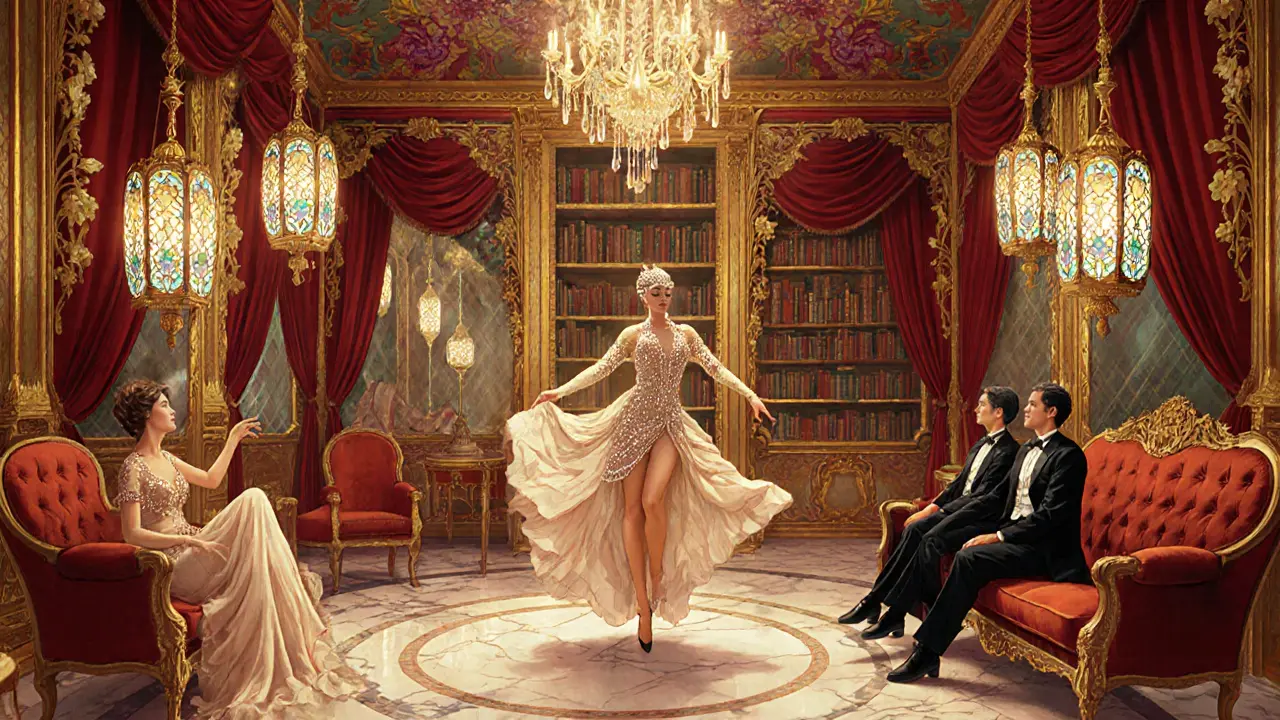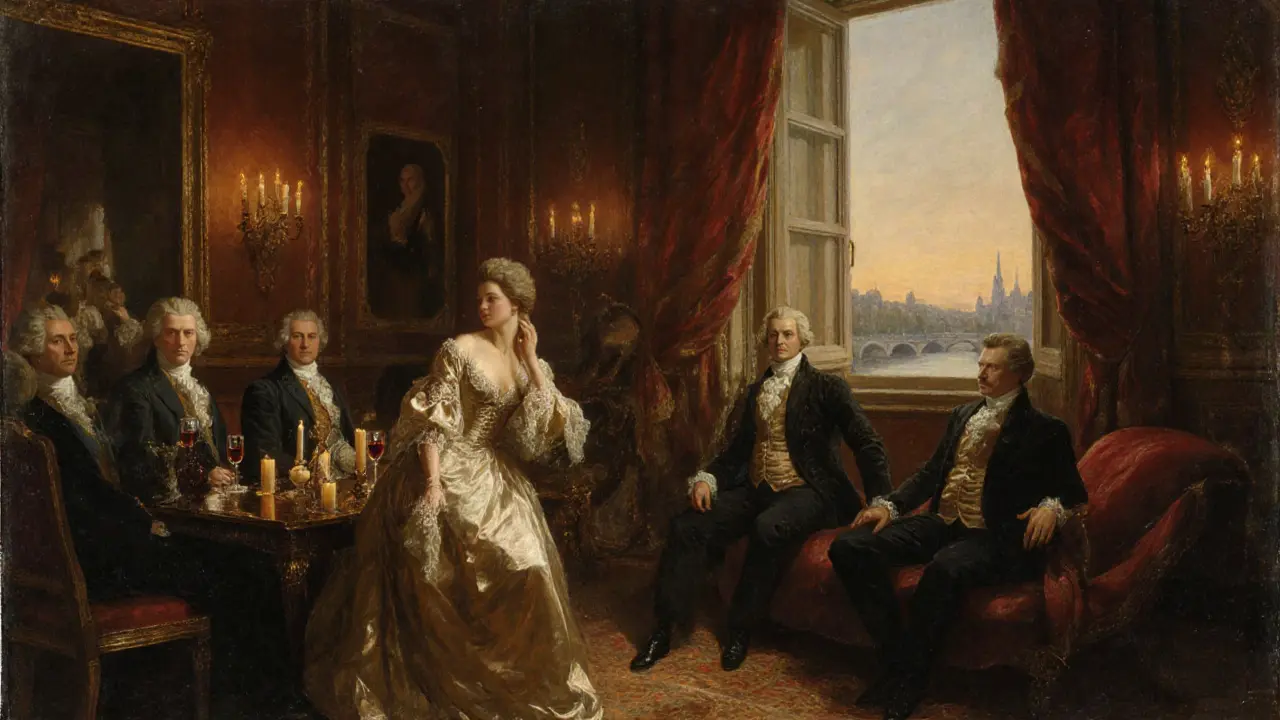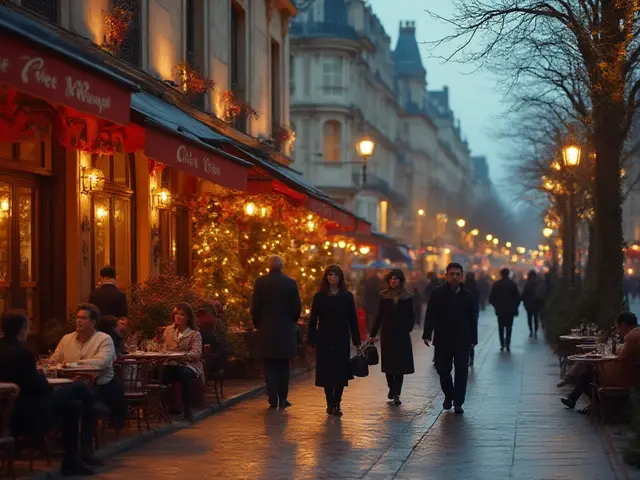When you think of Paris, you picture lights, fashion, and unforgettable nights. Beneath the glitter, the Paris escort industry has been a silent engine of the city’s nocturnal allure for centuries. From clandestine salons in the 1700s to digital platforms today, the industry has survived revolutions, wars, and legal battles. This article walks you through the moments that shaped the scene, the laws that tried to tame it, and the cultural ripples that still echo through the French capital.
Early Beginnings: The 18th‑Century Salons
In the late 1700s, Parisian courtesans set the stage for an organized escort market. Moulin Rouge was not yet the cabaret we know today, but its predecessor venues hosted elite gatherings where high‑society women offered companionship for a fee. These early salons were more than just rooms for discreet encounters; they were networking hubs where artists, politicians, and aristocrats mingled. The practice was tolerated because it kept the elite’s desires out of the streets, a tacit agreement that would linger for generations.
Belle Époque: Luxury Meets Opulence
The period from 1870 to 1914 is often called the Belle Époque - a time of artistic explosion and booming economy. High‑end brothels like Le Chabanais catered to royalty and foreign dignitaries, charging astronomical rates for themed rooms and elaborate performances. The owner, Madame Kelly, marketed her establishment as a "temple of pleasure," and the press covered it with a mixture of fascination and moral panic. This era cemented the notion that escort services could be a luxurious, cultured experience rather than mere street‑level prostitution.
World Wars and the Shadow Economy
Both World War I and II forced the industry underground. Occupied Paris saw German soldiers frequenting clandestine venues, while resistance fighters used escort houses as meeting points. The post‑war reconstruction period brought a surge in demand - soldiers returning home sought companionship, and cabarets re‑opened under new names. Yet the legal environment remained murky; police raids were common, and many escorts operated under false identities to avoid arrest.
Legal Reforms: The 1907 and 2003 Laws
The first major attempt to regulate prostitution came with the 1907 Law (Loi de 1907), which banned brothels but allowed independent escorts to work discreetly. This “closed‑door” approach aimed to protect public order without driving the trade entirely underground. Decades later, the 2003 French prostitution law shifted focus to clients, penalizing those who purchased sexual services while offering outreach programs for sex workers. The law sparked heated debate: advocates praised its victim‑centered stance, while critics argued it pushed escorts further into the shadows.

The Digital Turn: 2000s to Early 2010s
Broadband internet transformed the industry. Websites and later mobile apps allowed escorts to advertise directly, bypassing traditional agencies. Digital escort platforms such as "Paris Elite" and “Secret Paris” offered verified profiles, secure payment gateways, and discreet booking tools. This shift democratized access but also introduced new challenges like data breaches and platform‑run scams. Law enforcement began monitoring online traffic, leading to periodic shutdowns of major sites, yet the ecosystem proved resilient, constantly migrating to new domains.
Media Scandals and Public Perception
High‑profile scandals-like the 2015 “Paris Nightlife Leak,” where encrypted messages from several luxury escort agencies were exposed-brought the industry into the mainstream conversation. Media outlets highlighted the involvement of politicians, celebrities, and even sports stars, feeding a narrative that linked escort services with power and corruption. The fallout prompted parliamentary hearings, fresh legislative proposals, and a surge in public opinion polls that showed a divided French populace: 48% favored stricter enforcement, while 42% defended the right to consensual adult work.
COVID‑19 Pandemic Impact
The 2020 pandemic forced most nightlife venues to shut down for months. Escorts turned to video‑call services, offering “virtual companionship” for a fraction of the usual rate. COVID‑19 pandemic impact revealed the industry’s adaptability but also its financial fragility; many independent workers reported a 70% drop in income during lockdowns. Post‑pandemic, a hybrid model emerged: in‑person meetings combined with remote check‑ins, creating a new niche market that continues to grow.

Timeline of Unforgettable Moments
| Year | Event | Significance |
|---|---|---|
| 1760 | Rise of elite salons | Established early organized escort services |
| 1885 | Opening of Le Chabanais | Set luxury standard for high‑end escort houses |
| 1907 | Loi de 1907 enacted | Closed brothels, regulated independent escorts |
| 1944 | Post‑WWII boom | Escorts met demand of returning soldiers |
| 2003 | New prostitution law | Criminalized clients, shifted focus to protection |
| 2008 | Digital platforms launch | Online advertising reshaped market dynamics |
| 2015 | Paris Nightlife Leak | Media scrutiny of elite escort networks |
| 2020 | COVID‑19 lockdown | Shift to virtual services, massive income loss |
| 2023 | Hybrid service model | Combines in‑person and virtual companionship |
Current Landscape and Future Outlook
Today, the Paris escort industry operates at the intersection of tradition and technology. High‑end agencies still book appointments in historic mansions, while newcomers leverage AI‑driven chatbots to screen clients. Legal debates continue: proposals to legalize and tax escort services like other gig‑economy roles have gained traction, but conservative factions resist change. What’s clear is that the sector will keep evolving as societal attitudes shift and digital tools improve.
Key Takeaways
- From 18th‑century salons to 21st‑century apps, the industry has constantly reinvented itself.
- Legal reforms-1907, 2003, and ongoing proposals-have shaped how escorts operate and how society perceives them.
- Scandals and media exposure often trigger policy debates, reflecting the tension between privacy and public interest.
- COVID‑19 forced a rapid pivot to virtual services, creating a lasting hybrid model.
- The future likely involves more regulation, technology integration, and a broader conversation about sex‑worker rights.
Frequently Asked Questions
What triggered the first major legal change in Paris' escort scene?
The 1907 law, known as Loi de 1907, closed brothels but allowed independent escorts to keep working, marking the first systematic attempt to regulate prostitution in France.
How did World War II affect escort services in Paris?
The war pushed many operations underground, yet after liberation there was a surge in demand from returning soldiers, leading to a brief boom in clandestine appointments.
What are the main differences between the 1907 and 2003 prostitution laws?
The 1907 law focused on closing physical brothels while tolerating solo escorts. The 2003 law shifted criminal responsibility to clients, introducing penalties for buyers and offering assistance programs for workers.
How did digital platforms change the escort market?
Websites and apps let escorts advertise directly, bypass agencies, and accept secure online payments. This increased anonymity for clients but also raised concerns about data security and platform accountability.
Is virtual companionship a permanent part of the industry?
The pandemic proved that many clients are comfortable with video‑call sessions, and since 2023 a hybrid model combining in‑person and virtual meetings has become a standard offering.



